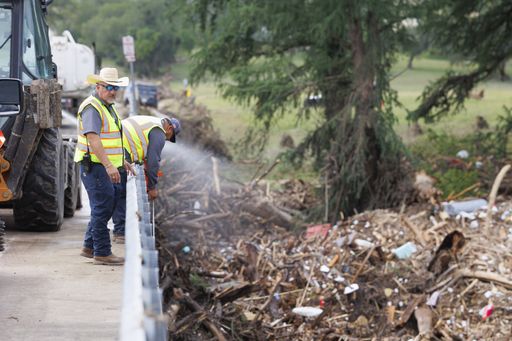Washington, DC — In under an hour, the Guadalupe River, popular for rafting, fly fishing, and canoeing, surged 26 feet, dragging homes, summer camps, and nearly 110 lives into the floodwaters.
It surged before dawn, fast and merciless, swallowing cabins, cars, and the childhood laughter that had once echoed across Camp Mystic, a century-old girls' summer retreat tucked into the banks of the Guadalupe River.
By mid-morning, the camp was gone; the river had swollen beyond imagination. And so were scores of lives lost to what officials now call the "deadliest flood" in modern Texas memory.
But as helicopters scanned the silty aftermath for the still-missing, another quieter, slower disaster was unfurling: one measured not in feet of water but in skyrocketing premiums, abandoned policies, and the unraveling of a dream once sold cheap — a home in Texas.
"I tell my clients this isn't just a housing crisis," Javier Mendonza, a Houston-based climate risk analyst and former underwriter, told TRT World.
"This is a protection crisis. You can still buy the American dream in Texas. You just can't seem to always insure it."
A house uninsured
For decades, Texas beckoned with sprawl and sun. A place where teachers, Uber drivers, first-gen graduates, could still swing a three-bedroom with a yard. But in cities like Austin, the price of living is no longer just the mortgage — it's the climate math.
A median Austin home runs around $450,000–$560,000. But an increasing number of buyers, especially cash purchasers or those using alternative financing, are going without insurance.
Why? Because the average premium has soared past $2,700 a year, and in certain high-risk areas, carriers are simply pulling out.
"You're basically buying a six-figure asset with no parachute," said Mendonza. "And in this state, where wildfires lick your backyard and hail is common, that's suicidal."
Austin alone has 71 percent of its homes at risk of wildfire. Nine percent face severe flood risk over the next three decades. And in the wake of last weekend's deadly flood, even "non-flood zones" aren't safe.
As rescue crews continue to comb riverbanks for the missing and families sort through mud-soaked debris, the political spotlight begins to shift toward the disaster zone.
US President Donald Trump told reporters in Washington that he plans to visit Texas this week, "probably Friday."
"I would have done it today, but we'd just be in their way," he said.

Growth meets the gulf
As officials tally the dead and begin to patch roads, restore power, and count what's been lost, a quieter reckoning is also underway — one that doesn't make headlines but cuts deeper: a housing crisis made worse by climate chaos and the brittle illusion of security.
In Houston, realtors say what insurers won't put in writing: entire ZIP codes where flood coverage is near-impossible to obtain. Developers keep building. People keep buying.
This is also the paradox of Texas' growth boom: gleaming towers and master-planned suburbs sprouting atop forgotten creeks.
Cities are expanding faster than infrastructure or insurance models can adjust. The climate has shifted. But the promise hasn't.
"There's this sense that if you work hard enough, you'll be rewarded with stability," said Mendonza.
"But what we're seeing is a rupture in that narrative. You can do everything right and still lose everything overnight."
New American gamble
"In Austin, a 44-year-old client purchased a modest East Side home two years ago, cash, after saving for nearly a decade. She tried to get insurance. Four companies declined. The fifth offered a premium so high it would have eaten half her salary," Mendonza explained.
This is just one of the many cases, he noted.
Texas has racked up more than $400 billion in climate-related damages since 1980. But the cost isn't just physical.
It's psychological, millions of residents living in a constant state of anxious calculus, wondering if the next weather alert will be the one that ruins them.
A flood sweeps away a summer camp. But also, in the fine print: the idea that a house is a sanctuary.
In a heating world, the story of Texas may not be just about resilience or even loss; it may be about reinvention and rethinking what security looks like in the age of megafires, inland tsunamis, and flash floods.
"We're not just adapting to climate," Mendonza said. "We're rewriting the American dream in real time. And like all great stories, this one's going to cost more than we imagined."



















